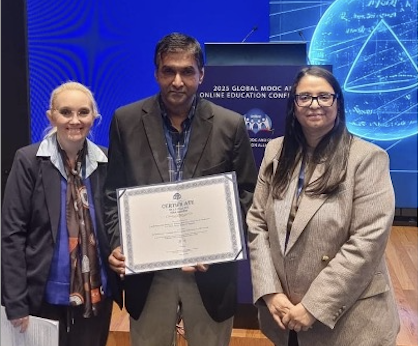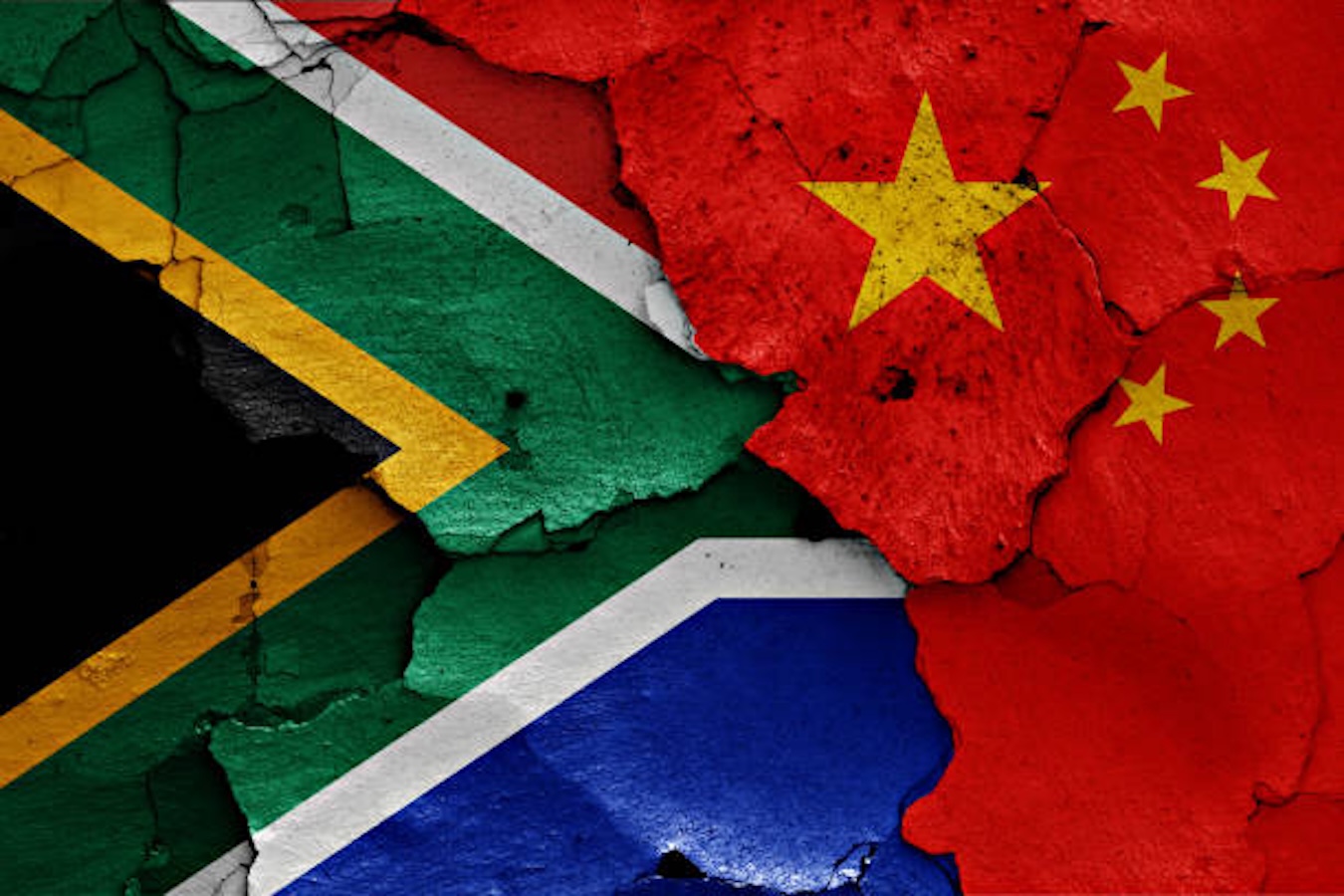Letlhokwa George Mpedi is the Vice-Chancellor and Principal of the University of Johannesburg. Tshilidzi Marwala is a Rector of the United Nations University and UN Under Secretary-General.
They recently published an opinion article that first appeared in the Daily Maverick on 17 February 2025
In an increasingly automated environment, fewer human workers and the rise of autonomous systems and collaborative robots, or co-bots, could reduce the effectiveness of strike actions. This shift is troubling, since collective bargaining without the right to strike risks becoming mere collective pleading.
ears of widespread job losses have accompanied every industrial revolution, and the current era of digital transformation is no exception. Yet, as Yuval Noah Harari reminds us, “since the beginning of the Industrial Revolution, for every job lost to a machine, at least one new job was created, and the average standard of living has increased dramatically”.
While automation will inevitably displace jobs, the creation of new ones remains less certain. Encouraging forecasts, such as the World Economic Forum’s (WEF) Future of Jobs Report 2025, project that 92 million jobs will be lost, but 170 million will be created, yielding a net gain of 78 million jobs.
This growth will be influenced by technological advancements, the circular economy and broader economic shifts. However, a deeper analysis of these figures reveals complexities that require strategic interventions.
The reality of job displacement
The inevitable job losses due to operational requirements introduced by the Fourth Industrial Revolution (4IR) are governed in South Africa by sections 189 and 189A of the Labour Relations Act No 66 of 1995, which regulate retrenchments resulting from economic, technological or structural changes.
Employers must adhere to fair procedures, including consultation, exploring alternatives and providing severance pay, with additional protections under the Employment Equity Act, Basic Conditions of Employment Act and Unemployment Insurance Act to safeguard labour rights and mitigate job displacement.
Unlike past industrial transitions, the nature of 4IR presents unique challenges. According to the World Economic Forum (WEF) report, by 2030, 39% of workforce skills will change, necessitating significant adaptation, workforce resizing and reskilling to meet evolving job market demands.
As early as 1930, John Maynard Keynes predicted the emergence of technological unemployment, calling it a “new disease” caused by the rapid shift from one economic era to another. He noted that societies struggle not due to stagnation but rather due to the “growing pains” of rapid change. His concerns remain relevant today.
Unlike in previous industrial shifts, 4IR job creation is not guaranteed. Achieving a sustainable employment landscape requires deliberate action from policymakers, businesses and social partners.
Protecting existing jobs while fostering new industries requires proactive initiatives, including reskilling, upskilling and adaptive labour policies driven by smart legislators and forward-thinking industrialists who can craft policies and strategies that align with technological advancements. Failure to act will have dire consequences.
Unemployment has severe social and economic ramifications, ranging from rising poverty levels and inequality to increased government spending on social welfare and potential social unrest.
However, by implementing forward-thinking policies, investing in workforce development and fostering an inclusive economy, societies can mitigate automation’s risks while harnessing its benefits.
The South African context: automation and the labour market
In South Africa, automation presents unique challenges due to the country’s high unemployment rate, profound inequality and reliance on labour-intensive industries.
With an official unemployment rate of 32.1% (as of 2024) – one of the highest globally – the impact of automation on job security is a significant concern. Many industries, including mining, agriculture and manufacturing, depend on low-skilled labour, making them particularly vulnerable to displacement. At the same time, automation has already begun reshaping banking, retail and service industries, reducing demand for traditional roles.
However, South Africa also faces structural unemployment, where a large portion of the workforce lacks the necessary skills for emerging digital jobs. The digital divide further exacerbates these inequalities, with workers in rural areas and underprivileged communities having limited access to digital infrastructure and technology education.
This gap makes it harder for displaced workers to transition into new roles in artificial intelligence (AI), cybersecurity or advanced manufacturing.
Yet, automation is not purely a threat – it presents opportunities for economic transformation if managed correctly. Investing in reskilling initiatives, digital literacy programmes and green economy sectors can create sustainable jobs.
The South African government has taken steps through the Presidential Commission on the Fourth Industrial Revolution, but the challenge remains in implementation and funding. The success of these initiatives will determine whether South Africa can leverage automation for inclusive economic growth or whether it will deepen existing inequalities.
The erosion of collective bargaining rights
Beyond job displacement, automation poses a serious challenge to collective bargaining and the right to strike. In the modern workforce, labour unions negotiate with employers to improve wages, working conditions and employee protections. When negotiations fail, workers have the right to strike – a fundamental tool in labour relations.
However, in an increasingly automated environment, fewer human workers and the rise of autonomous systems and collaborative robots (co-bots) could reduce the effectiveness of strike actions. This shift is troubling, as collective bargaining without the right to strike risks becoming mere collective pleading.
In an automated workplace, the traditional means of withdrawing labour may no longer serve as leverage, requiring a re-evaluation of labour laws and industrial action mechanisms. Strike regulations will need to evolve to address new labour realities, ensuring that workers can still advocate for fair treatment without disproportionately disrupting business operations.
Policy and advocacy in the age of automation
To navigate these challenges, labour unions, policymakers, and businesses must modernise bargaining strategies and expand worker protections. This involves advocating for policy reforms that ensure an equitable labour market in the context of 4IR. Reskilling programmes, regulatory safeguards and enhanced social protections will be critical in shaping a sustainable and fair labour environment.
Moreover, maintaining job security in an era of AI-driven automation requires collaboration between governments, businesses and labour organisations. Strengthening policies around decent work, fair wages and lifelong learning initiatives will be essential to ensuring that technology enhances, rather than displaces, human labour.
Shaping the future of work
As industries evolve, the balance between job security and workers’ rights remains a crucial challenge. While automation presents opportunities, it also introduces uncertainties that demand strong governance, forward-thinking policies and ethical AI development. Stakeholders must work together to establish comprehensive safeguards that protect employment opportunities while upholding workers’ rights in an increasingly digitalised world.
As David Rotman wrote for MIT Technology Review, “at a time when AI companies are gaining unprecedented power and wealth, they also need to take greater responsibility for how the technology is affecting workers. Conjuring up a magical genie to explain an inevitable jobless future doesn’t cut it. We can choose how AI will define the future of work.”
The future is not predetermined – it is shaped by the policies, protections and priorities that balance economic progress with social wellbeing.
*The views expressed in this article are that of the author/s and do not necessarily reflect that of the University of Johannesburg.



